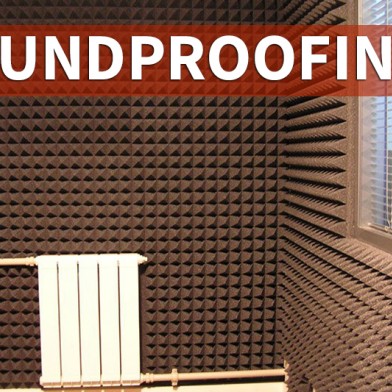Soundproofing
- 10 February 2021 22:44:30
- Reviews: 0
- Views: 633
-

The purpose of soundproofing is to prevent sound from penetrating from one side to the other, or to reduce penetrating sound to an acceptable level. The use of soundproofing is intended to protect against noise.
The level of sound transmission loss through a baffle is a measure of how effectively a given baffle attenuates sound. The efficiency of reducing sound transmission from one side to the other is determined by the R index - sound insulation.
Soundproofing can be divided into two categories: soundproofing against airborne noise (i.e. airborne sounds such as speech) and impact sounds (i.e. sounds that are transmitted through the building structure such as banging, footsteps, etc.). ). Airborne sound insulation coefficients are most commonly described as vertical wall-type partitions and impact sound floors and ceilings. In addition, we distinguish between the concept of proper soundproofing, approximate R '.

To determine the parameters of partitions, we use indicators such as R'A1 and R'A2, which approximate the specific indicators of nominal sound insulation. Insulation performance should no longer be determined using the RW factor, expressed as a single number describing airborne sound insulation, by comparing the specific sound insulation R' with a reference curve. These coefficients are expressed in decibels.
- R'A1 is a factor used to determine the insulation properties of partitions such as interior walls, ceilings, interior doors, interior windows,
- R'A2 is a factor used to determine the insulation capacity of partitions such as an external wall, ceilings without windows or windows, windows in an external partition.
To determine the sound insulation of ceilings, for example, a weighted normalized approximate indicator of the impact level L'n, w is used.
Partition wall insulation is inevitably related to the law of mass for single-layer structures such as a solid wall (eg concrete wall). The heavier the partition, the more massive it is, the better the insulation. In the case of light multilayer partitions, we are dealing with a mass-spring system.


